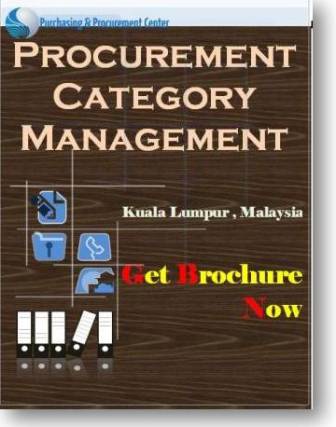Category Management in Procurement:
3 Key Benefits, Execution, Role of Technology, 3 Common Challenges & Measuring the Success of Category Management!

Within procurement, category management plays a pivotal role
in ensuring efficiency, cost savings, and improved supplier relationships.
In this article, we will delve into the fundamentals of category management in procurement, discuss the steps to successfully implement it, explore the role of technology, address common challenges, and explore techniques for measuring success.
The Essentials of Category Management in Procurement!
Category management in procurement is a strategic approach
that involves grouping similar goods and services into categories and then
managing them as a collective unit.
By taking this approach, organizations can leverage economies of scale, negotiate better pricing terms, and implement consistent strategies across related procurement activities. It goes beyond simple purchasing and focuses on optimizing procurement processes to drive value.
3 Key Benefits of Category Management!
1. Economies of Scale
One of the key benefits of category management is the ability to leverage economies of scale. By consolidating purchasing volume within a category, organizations can negotiate better pricing terms with suppliers. This not only leads to cost savings but also ensures consistency in pricing across similar goods and services.
2. Developing Specialized Strategies for Each Category
Moreover, category management enables organizations to develop specialized strategies for each category based on their unique requirements.
For example, categories with high strategic importance may require a more collaborative approach with suppliers, while categories with lower complexity may benefit from a more transactional approach. By tailoring strategies to each category, you can optimize your procurement processes and drive value in a targeted manner.
3. Streamlining supplier relationships
Another advantage of category management is the ability to streamline supplier relationships. By grouping similar goods and services together, you consolidate the supplier base and establish strategic partnerships.
This allows for better supplier management, as you can focus your efforts on building strong relationships with a select group of suppliers, rather than managing a large number of fragmented relationships.
3 Steps to Successful Category Management in Procurement!
Step 1 - Identifying Your Categories
The first step in implementing category management is
identifying and defining your categories. This involves analyzing your
procurement data to identify commonalities, such as similar products, services,
or supplier types. By grouping items with shared characteristics, you can start
building a structured category framework.
- Consider Current & Future Requirements
When identifying your categories, it is important to consider not only the current procurement needs but also future requirements. This can involve conducting market research and staying updated on industry trends. By anticipating future needs, you can ensure that your category management strategy is flexible and adaptable.
- Involve Key Stakeholders
Furthermore, it is crucial to involve key stakeholders in the category identification process. This can include representatives from different departments within the organization, as well as suppliers and customers. By gathering input from various perspectives, you can ensure that the identified categories align with the overall business objectives.
Step 2 - Developing a Category Management Strategy
Once you have identified your categories, the next step is
to develop a category management strategy. This strategy should outline the
objectives, goals, and approaches for each category. It should consider factors
such as supply chain risks, market dynamics, and business priorities.
A well-crafted strategy ensures that all stakeholders are aligned and that the procurement team is working towards a common goal.
- Strategize for Each Category
Developing a category management strategy involves conducting a thorough analysis of each category. This can include assessing the current supplier landscape, evaluating the competitive landscape, and identifying potential risks and opportunities. By understanding the unique characteristics of each category, you can tailor your strategy to maximize value and mitigate risks.
- Align Category Strategy with Procurement Goals & Objectives
Furthermore, the category management strategy should also consider the organization's overall procurement goals and objectives.
This can include cost reduction targets, supplier diversification initiatives, or sustainability objectives. By aligning the category management strategy with the broader procurement strategy, you can ensure a cohesive and integrated approach.
Step 3 - Executing the Strategy
Executing the category management strategy involves translating the strategic vision into actionable steps. This includes:
- Establishing clear roles and responsibilities within the procurement team,
- Setting performance metrics,
- Executing plans to achieve the desired outcomes,
- Engaging with suppliers to negotiate contracts,
- Monitor performance, and
- Drive continuous improvement.
- Communication Plan
When executing the strategy, it is important to have a robust communication plan in place. This ensures that all stakeholders are aware of the category management objectives, their roles and responsibilities, and the expected outcomes. Regular communication and feedback loops can help address any challenges or roadblocks that may arise during the implementation process.
- Ongoing Monitoring & Evaluation
In addition, executing the category management strategy requires ongoing monitoring and evaluation. This can involve tracking key performance indicators (KPIs), conducting regular supplier performance reviews, and analyzing market trends.
By continuously monitoring and evaluating the strategy, you can identify areas for improvement and make necessary adjustments to ensure its effectiveness.
Leveraging Data Analysis in Category Management!
Data analysis is a crucial component of effective category
management. By utilizing modern analytical tools, such as machine learning and
artificial intelligence, organizations can gain valuable insights into their
procurement data.
These advanced analytical techniques can help identify trends, patterns, and anomalies in your procurement data, enabling you to make data-driven decisions.
By spotting opportunities for cost reduction, organizations can optimize their procurement strategies, negotiate better deals with suppliers, and ultimately achieve significant cost savings.
- Decision-Making
Furthermore, data analysis can also enhance decision-making processes in category management. By leveraging the power of technology, organizations can quickly analyze large volumes of data, identify potential risks, and make informed decisions that drive business growth and competitive advantage.
Overall, technology plays a critical role in category management, offering you tools and capabilities needed to streamline processes, consolidate data, and track metrics effectively.
By leveraging data analysis techniques, you can optimize you category management strategies, drive cost savings, and achieve your business objectives.
Overcoming 2 Key Challenges in Category Management Implementation!
- Addressing Resistance to Change
Implementing category management often requires a change in workflows and processes. This can lead to resistance from stakeholders who are accustomed to traditional procurement practices.
To overcome this challenge, it is crucial to communicate the benefits of category management, involve key stakeholders early on, and provide training and support throughout the transition.
- Ensuring Supplier Compliance
Supplier compliance is a common challenge in category management. With multiple suppliers across different categories, it can be challenging to ensure that they adhere to the organization's procurement processes and meet quality standards.
Building strong supplier relationships, implementing clear contractual terms, and conducting regular performance reviews can help mitigate this challenge.
Measuring the Success of Category Management!
Measuring the success of category management requires
defining key performance indicators (KPIs) that align with organizational
goals.
Examples of KPIs include cost savings achieved, supplier performance ratings, and process efficiency metrics. Regular monitoring and reporting of these KPIs provide visibility into the effectiveness of category management efforts.
Last but not Least - Continuous Improvement in Category Management!
Category management is an ongoing process that requires continuous improvement. Regularly review your category management strategy and adapt it as market conditions change.
Solicit feedback from stakeholders,
benchmark against industry best practices, and explore innovative approaches to
ensure that your category management efforts remain relevant and effective.
In conclusion, implementing category management in procurement can drive significant improvements in cost savings, supplier relationships, and overall efficiency.
By understanding the essentials, following a structured approach, leveraging data-analytics, addressing challenges, and measuring success, you can unlock the full potential of category management in your procurement processes.
Embrace this strategic approach and reap the benefits it offers in optimizing your procurement efforts.
Implement Category Management in Your Organisation with our Procurement Category Management Training!
Led by a Former Strategic Sourcing Director of Bank of America, this training is filled with real-life case studies, exercises and ready-to-use checklists and templates.
Fill in the Form Below To Get the Official Training Program Brochure !

